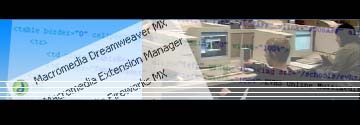|
Creating Your First Webpage
Open Dreamweaver. (For help, see Day One)
A new document (blank space) _should_ be present on the screen when you launch
the program. On the top bar, it should say something like Untitled Document
(Untitled).
If there is no document present, go to File->New. Choose the option
to do a Blank Page from the Category column and choose HTML
from the Basic Page column that follows.
Title
One of the most important things to do when you first create your page is to
name your document. The title of the page is what appears up by the application
name in internet browsers like Internet Explorer and Netscape. When your page
is graded, if you forget to do this, you will lose points. This is clearly defined
on the rubric and is mentioned in the web design tips document.
The title you give the page should perhaps include the name of the site, followed
by a section. This is really up to how the designer does it. For instance, if
your site was called “Gunner’s Knives” and you were making
a section called Life Story, you may want to make your title appear like
this: “Gunner’s Knives > Life Story” (or something
to that extent).
To enter your title, simply enter your desired title in the box on the top
of the page labeled Title. It should look something like this:
| Image |
 |
Saving
In Day One,
we created your web folder. Now we will save your first page. Go to File
-> Save As. Navigate to your Web Folder in your Hour’s folder.
Refer to Day One
if you need to find it again. Type in a filename; followed by the extension
.html. Let’s name it first.html. Press the Save button and
now your first web page will have been created.
Images (Conversion)
On the internet, page load speed is still a crucial speed as some users are
still on older, low-speed dial-up connections. As a result of this, images must
often be compressed as much as possible, while still keeping quality intact.
Therefore, when bringing high quality images to the internet, like all of your
Photoshop projects from Quarter One, we must shrink and compress them.
On to Page 2
|



